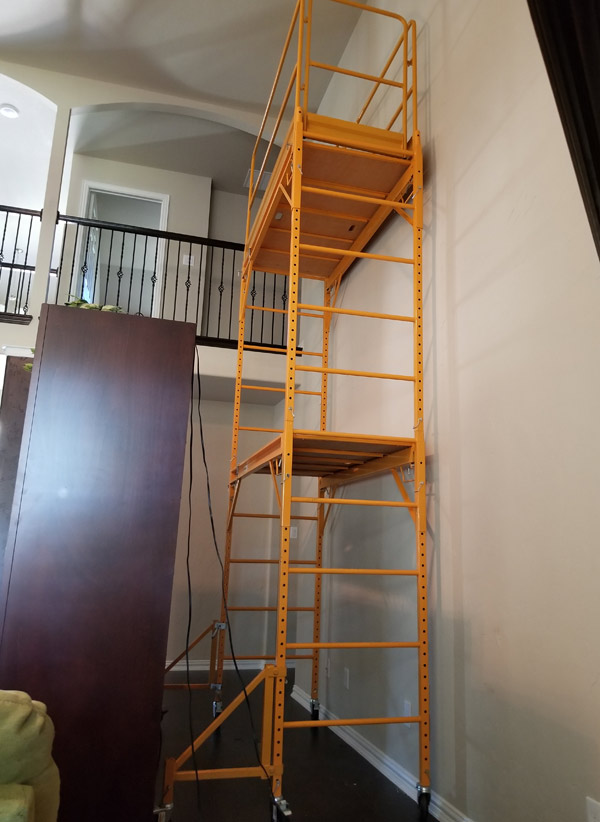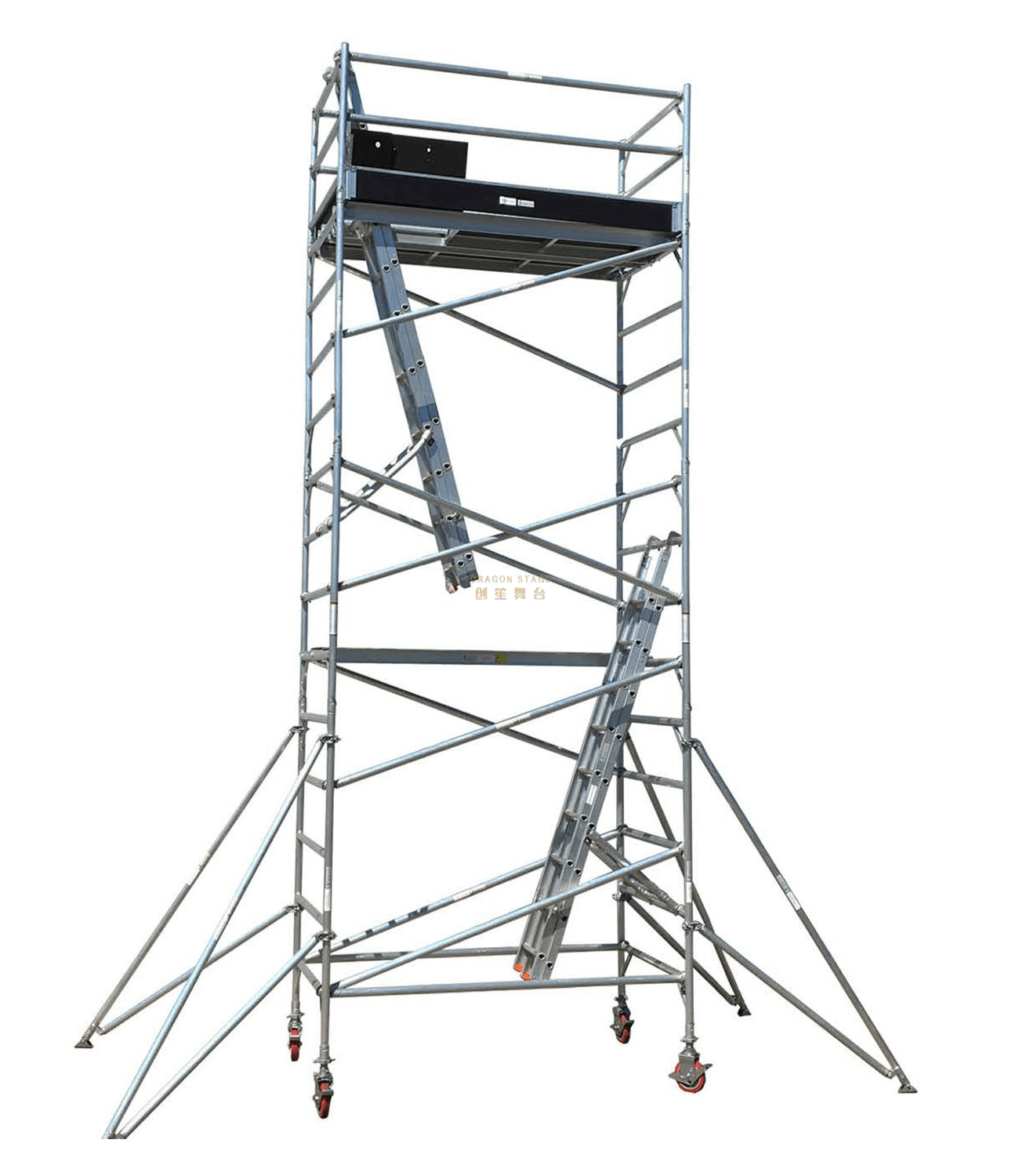Avoiding Common Scaffolding Mistakes: Ideal Practices
Scaffolding in High Winds: Security Measures and Tips =====================================================
In high winds, prioritize scaffolding security via wind lots calculations and correct layout. Warranty protected anchoring making use of strategies like ground screws and tie-downs. Normal examinations and upkeep checks are essential for safety and security. Outfit employees with vital PPE and protected tools and products. Establish emergency feedback procedures, consisting of training and interaction plans. A comprehensive scaffold security plan enhances preparedness. Minimize threats through regular drills and method. rent scaffolding Enhance security by recognizing evacuation paths and designating emergency situation leaders. For a thorough understanding of scaffolding safety and security in high winds, follow these standards.
Wind Ranking for Scaffolding
When reviewing the wind ranking for scaffolding, it is essential to take into account the structural honesty and security of the scaffolding system under various wind rates. Scaffolding layout plays a substantial duty in identifying its ability to withstand varying wind lots. Correct wind load calculations are necessary to ensure that the scaffolding can safely support employees and products in gusty problems.
The layout of the scaffolding have to consider factors such as the elevation of the framework, the spacing of cross braces, and the kind of materials made use of. These components add to the general stability of the system when revealed to wind pressures. Wind tons estimations involve assessing the wind stress on the scaffolding based on variables like the geographical place, average wind rates, and the area of the framework.
Correct Anchoring Techniques
When setting up scaffolding in high winds, appropriate anchoring strategies are essential to guarantee security and security. Protected base support, wind-resistant tie-downs, and regular inspection checks are bottom lines to ponder for reliable anchoring.
Protect Base Support
Using efficient anchoring techniques is crucial for making certain the security and safety of scaffolding in high winds. Base stability is important in standing up to the pressures exerted by strong winds. Effectively anchoring the scaffolding to a strong structure, such as a concrete slab or durable ground, assists disperse the wind force and avoid tipping or collapsing.
The support structure have to be safely attached to the base to boost wind resistance. Anchors like screw-in ground supports or weighted counterweights can be utilized to reinforce the scaffolding's stability. By ensuring a protected base assistance via proper securing methods, the scaffolding comes to be more resilient against wind forces, decreasing the danger of crashes and enhancing overall safety on the worksite.
Wind-resistant Tie-downs
To improve the stability and wind resistance of scaffolding in high winds, carrying out wind-resistant tie-downs via appropriate anchoring methods is vital. Tie-down effectiveness is critical in guaranteeing the scaffolding can withstand strong winds.
Using wind-resistant products for tie-downs, such as durable straps or wires, can substantially boost the general security of the structure. When anchoring the scaffolding, it is necessary to secure the tie-downs to steady and unmovable frameworks, such as the structure itself or ground anchors.
Appropriate tensioning of the tie-downs is likewise vital to stop any slack that can jeopardize the effectiveness of the anchoring system. By making use of wind-resistant tie-downs and following correct anchoring methods, the scaffolding can much better hold up against high winds and make certain a much safer work environment.
Routine Inspection Checks
Routine evaluation checks play a critical duty in assuring the correct anchoring strategies of scaffolding are maintained to hold up against high winds effectively. Assessment regularity should follow security requirements, which typically need assessments prior to first usage, after any kind of event that might influence security, and at routine intervals afterwards.
These checks ensure that anchoring systems are safe and secure, connections are tight, and parts are free from damages or degradation. Inspections must include verifying the integrity of tie-down factors, making sure appropriate stress in tie-down systems, and examining the condition of support bolts or screws.
Any type of issues determined throughout assessments should be immediately dealt with to stop architectural failings and guarantee the safety and security of workers and the public.
Assessment and Upkeep Protocols
Maintenance schedules must be strictly adhered to in order to ensure the architectural stability of scaffolding in high wind problems. Routine examinations are vital to determine any issues promptly and guarantee the safety of workers. Here are key points to consider:
Maintenance Arrange: Develop a thorough upkeep routine that includes regular checks for deterioration, deterioration, and architectural stability.
Inspection Checklist: Utilize an in-depth inspection list that covers all vital elements such as joints, links, and base plates.
Safety Training: Make certain that personnel carrying out inspections are properly trained in scaffold safety and security and evaluation protocols.
Tools Screening: Conduct normal screening of equipment such as guardrails, toe boards, and tie-offs to verify their performance.
Individual Safety Tools (PPE)

Personal Protective Devices (PPE) is essential for ensuring the safety and security of workers on scaffolding, especially in high winds. This includes devices such as hard hats, gloves, harness, and non-slip footwear.
Correct maintenance and normal evaluations of PPE are necessary to guarantee their efficiency in guarding workers at raised elevations.
Necessary PPE for Employees
Employees engaging in scaffolding tasks in high winds must be outfitted with important Personal Protective Devices (PPE) to ensure their security on duty site. The following PPE is essential for employees in such conditions:
- Hard hats to secure the head from falling things
- Harness to avoid drops from elevations
- Safety goggles to secure the eyes from particles and wind
- High-visibility vests to guarantee visibility in low-light and high-wind scenarios
Correct maintenance of PPE is vital to ensure its efficiency, and tool security measures should remain in location to prevent things from falling off scaffolding, jeopardizing workers listed below. By focusing on using proper PPE, workers can reduce dangers and work securely in challenging settings.
Appropriate PPE Upkeep

To ensure the performance of protective gear, regular inspection and upkeep of the crucial devices made use of by individuals in high-wind scaffolding environments is necessary. Regular PPE assessment is important to ensure that the equipment continues to be in great condition and gives the necessary security.
Safety and security standards recommend looking for any type of indications of damages, such as tears, cracks, or weakened straps, and immediately replacing any compromised equipment. Additionally, proper storage space of PPE when not in use is basic to prevent destruction and maintain its effectiveness.
Routine cleaning and maintenance complying with manufacturer instructions can aid lengthen the lifespan of the equipment and ensure that it works as meant in high-wind conditions, shielding employees from potential hazards.
Securement of Tools and Materials
Ensuring that tools and products are appropriately secured is vital when dealing with scaffolding in high winds to prevent accidents and maintain a risk-free work environment. Correct device organization and material storage practices play an essential role in protecting against objects from coming to be hazardous projectiles. Additionally, routine tools upkeep is crucial to guarantee devices remain in excellent functioning problem and much less most likely to malfunction in challenging weather. Security training is likewise vital for all employees involved in scaffolding jobs, as it equips them with the understanding and skills essential to manage tools and materials safely also in damaging weather condition.
- Protect Devices: Usage device belts or tethering systems to avoid devices from dropping.
- Steady Product Storage Space: Pile products firmly to stop them from being blown away. https://highgatescaffolding.co.uk/index.html
- Routine Equipment Checks: Check devices consistently to recognize and resolve any kind of problems without delay.
- Comprehensive Security Training: Make sure all employees are trained in correct tool handling and storage space treatments to minimize dangers.
Emergency Situation Response Procedures
In case of unpredicted emergencies while servicing scaffolding in high winds, swift and well-coordinated feedback procedures are important to assure the safety and health of all individuals entailed. Carrying out regular emergency situation drills can aid familiarize employees with emptying procedures and make certain a fast and reliable response in instance of emergency situations. It is important for all employees to be fluent in the discharge routes and setting up indicate facilitate a smooth and orderly evacuation procedure. In addition, marking certain individuals to take cost throughout emergency situations and communicate instructions plainly to all workers can aid prevent panic and confusion.
Emergency situation action treatments need to be plainly detailed in the scaffolding security strategy, describing step-by-step directions on exactly how to react to various types of emergencies, such as high winds, equipment failure, or clinical events. Regularly reviewing and exercising these treatments can assist make sure that all employees are prepared to respond successfully in high-stress scenarios. By focusing on emergency preparedness and reaction training, workers can reduce dangers and enhance total security when working on scaffolding in high winds.
Frequently Asked Questions
Can Scaffolding Be Made Use Of in Extreme Climate Issues Such as Hurricanes or Tornadoes?
Scaffolding needs to not be used in severe climate condition like hurricanes or hurricanes as a result of safety and security threats. Emergency procedures need to remain in place, and utilizing wind-resistant materials can minimize possible threats related to strong winds.
Exist Any Particular Weight Boundaries for Scaffolding in High Wind Locations?
Weight limitations and wind stability are necessary consider guaranteeing the security of scaffolding in high wind areas. These limitations vary based on the scaffolding kind and layout. Following producer guidelines and sector criteria is vital.
Just How Typically Should Scaffolding Be Inspected for Wind Damages?
Regular wind damage control are important to guarantee the security and honesty of scaffolding frameworks. Evaluations need to be carried out at least weekly or after any kind of significant weather event to determine and deal with possible hazards quickly.
What Type of Personal Safety Equipment (Ppe) Is Advised for Dealing With Scaffolding in High Winds?
When working with scaffolding in high winds, it is necessary to prioritize safety by wearing appropriate individual protective devices (PPE) such as headgears, safety belt, and non-slip shoes. Executing these safety measures can assist prevent crashes and warranty tool safety and security.
Just how Should Tools and Materials Be Guaranteed on Scaffolding to avoid Them From Being Blown Away in Solid Winds?
To avoid tools and materials from being blown away in strong winds on scaffolding, protect them utilizing appropriate tool organization strategies and wind-resistant attachment methods. Executing safety measures such as tethering devices and weighting down materials can minimize dangers.
Conclusion
To sum up, making certain the safety of scaffolding in high winds calls for adherence to wind ranking guidelines, proper anchoring techniques, normal inspection, and maintenance.
It additionally entails making use of personal protective equipment, securement of tools and products, and knowledge of emergency feedback treatments. By adhering to these precautions and tips, workers can decrease the risk of mishaps and injuries while working on scaffolding in windy conditions.